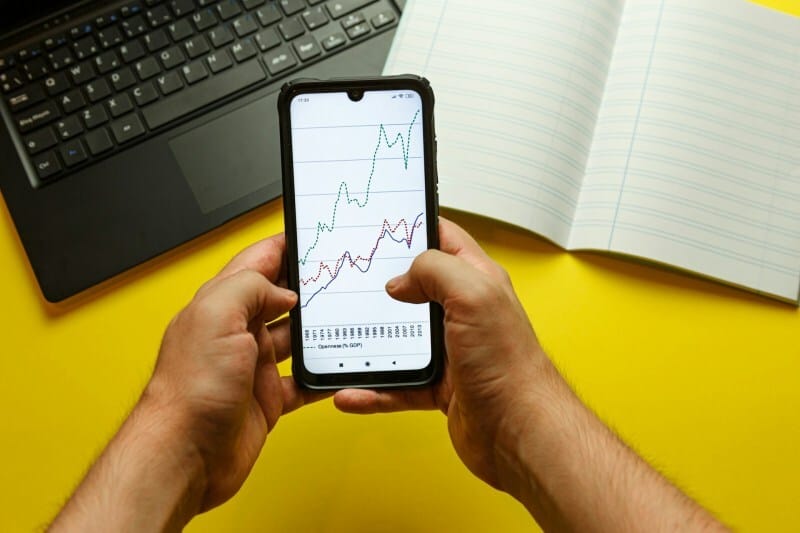Modern smartphones have long since ceased to be viewed as just simple communication tools. They are better considered as multi-functional platforms that can help a great deal in offloading cognitive tasks by intelligent systems of notifications and by automation as well.
To access some of the features limited by region, users take of the german proxies IP server as configuration, enabling the broader function within and beyond the local limitations. This broader technological ecosystem is transforming and redefining information management with newly added cognitive augmentation at a different level in daily life.

Location-Based Intelligence Systems
Modern location services extend far beyond simple coordinate tracking into sophisticated geofencing implementations. These systems establish virtual perimeters around designated locations, triggering actions upon entry or exit from these boundaries. Particularly valuable implementations include automated shopping reminders appearing precisely when entering specific stores, meeting preparation alerts when approaching office buildings, and household task notifications when returning home. Effective configuration requires precise boundary calibration—typically 75-100 meters provides optimal balance between reliability and advance notice.
Temporal context significantly enhances geofence effectiveness through combination logic merging location data with time-based variables. Monday morning arrival at office buildings triggers different notification sets than Friday afternoon presence at the same coordinates. Advanced implementations incorporate traffic prediction algorithms, automatically adjusting reminder timing when congestion might affect arrival schedules. These systems function most effectively when configured through observation periods allowing baseline pattern establishment rather than manual programming of expected behaviors.

Contextual Awareness and Behavioral Pattern Recognition
Motion and activity detection capabilities enable increasingly sophisticated automation based on physical state recognition. Walking, running, driving, and even sleeping states trigger context-appropriate notifications through continuous sensor monitoring. Exercise-oriented reminders activate during detected workout sessions, providing perfectly timed hydration or pacing guidance without requiring manual application launching. Driving-state detection enables automatic message response management and postponed notification delivery until vehicle stoppage detection occurs.
Phone orientation and movement patterns provide additional contextual triggers for automated systems. Devices placed screen-down implement automatic do-not-disturb modes, while pocket detection reduces notification volume. These physical handling patterns reveal significant information about current user states, enabling increasingly intelligent service adjustments without explicit configuration requirements. Facial orientation detection through front camera passive scanning similarly enables attention-aware notification timing, holding alerts during detected focused attention on other tasks.

Digital Behavior Pattern Recognition
Application usage patterns reveal substantial information about current cognitive states and receptivity to different intervention types. Advanced notification systems monitor application engagement sequences, identifying optimal interruption moments between active usage sessions rather than during focused interaction. These optimization algorithms significantly reduce perceived notification intrusion while improving information retention through timing alignment with natural attention transition points.
Keyboard input patterns also offer meaningful behavioral data that supports smarter interruption management. Fast typing speeds and sustained input typically signal concentrated work periods, during which non-essential notifications are best withheld. In contrast, intermittent typing activity may reflect openness to external prompts. Implementation data available at https://floppydata.com/ shows that aligning notification timing with these attention patterns improves response rates by approximately 34% compared to fixed scheduling methods.

Cross-Platform Integration Frameworks
Fragmented notification systems fundamentally undermine cognitive offloading effectiveness. Modern approaches emphasize unified interruption management across multiple devices rather than device-specific implementation. Particularly effective configurations establish hierarchical alert distribution based on detected active devices—sending notifications to currently engaged screens rather than broadcasting across all endpoints. This approach significantly reduces attention fragmentation through intelligent distribution rather than mere synchronization.
Message importance classification systems enable increasingly sophisticated filtering based on context-sensitive priority determination. These systems evaluate both explicit settings and implicit factors including sender relationship, historical response patterns, and message content analysis. The resulting classification enables context-appropriate interruption management far surpassing simple binary notification settings. Advanced implementations incorporate location context into priority determination, applying different filtering thresholds based on current environment characteristics.

Voice Assistant Optimization Techniques
Natural language processing capabilities underwent revolutionary advancement between 2021 and 2024, enabling increasingly sophisticated voice-controlled automation. Effective implementation extends beyond basic command recognition into proactive suggestion frameworks offering contextually relevant automation options before explicit requests occur. These systems observe recurring behavioral patterns, identifying automation opportunities through frequency analysis rather than requiring manual routine programming.
Custom voice shortcut implementation provides particularly significant cognitive offloading through linguistic compression techniques. Complex instruction sequences condense into single-phrase triggers executing extensive background operations without cognitive overhead. Particularly valuable implementations include context-sensitive information gathering routines consolidating data from multiple sources into cohesive briefs delivered at situation-appropriate moments based on detected activities rather than explicit invocation requirements.

Notification Reduction Through Predictive Systems
Notification fatigue represents perhaps the greatest obstacle to effective cognitive augmentation through mobile devices. Advanced configuration approaches emphasize information consolidation rather than immediate delivery for non-urgent updates. These systems aggregate related notifications into single-delivery packages presented at algorithmically determined optimal moments rather than generating separate interruptions for each information element. Implementation statistics demonstrate approximately 47% reduced notification frequency while delivering equivalent information volume through intelligent grouping mechanisms.
Attention state detection through screen engagement patterns enables increasingly sophisticated timing optimization. These systems identify focused work sessions through continuous interaction monitoring, automatically postponing non-critical interruptions until detected attention transitions occur. Particularly effective implementations incorporate productivity application detection, applying stricter delivery thresholds during recognized deep work activities than during entertainment or casual browsing sessions.
The post Smart Reminders, How to Configure Your Phone to Think for You appeared first on Moss and Fog.
